#1 Drawing Research Week
by Patricia Guaita & Raffael Baur
The Drawing Research Week proposes to bring together students from the different disciplines into a research on and trough drawing. We are interested in creating a tacit knowledge that is not transmitted but produced.
Through drawing, we will analyse and question spatial, tectonic, urban and material articulation as well as the notion of place. Analysis will take apart and make transparent a seemingly oblique reality, transforming it into a condition of possibility. We will explore drawing by hand, (with fixpencil on paper), with string and with our body in space. Our site will be the one in front of us: the Campus Mutsaard as built but also historically transformed reality.
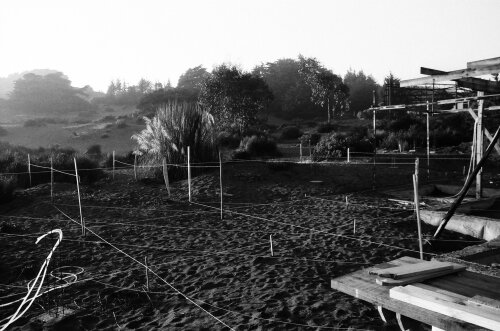
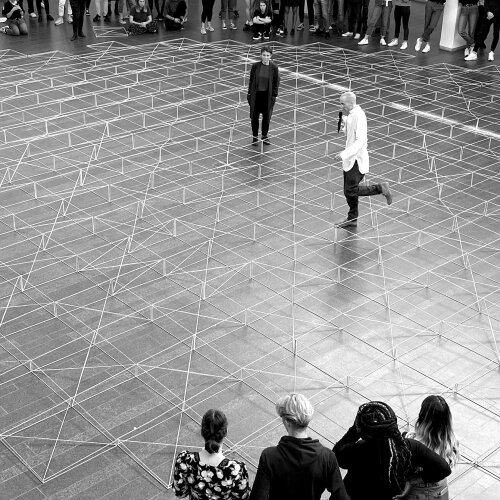
Drawing by hand will be explored not as a medium of representation but as a mediator between construction and the individual. The act of drawing as a physical and spatial experience allows us to observe, measure and construct: to see. The drawings are plastic: built up through continuous iterations, they accumulate numerous strata and temporalities. Each student will draw individually and collaboratively, creating an intimate space of reflection and doubt while working in interdisciplinary groups building up a shared research. The measuring methods and devices may acquire a physical reality (e.g. strings pulled across a terrain or facade) and manifest itself as a new temporary layer in the urban context. The essential aspects of drawing cannot be taught theoretically, they can only be learned through practice. The use of drawing as action initiates a transformative bodily experience generating intensities, frictions and new knowledge that only the one who makes can access. The aim is not to build neutral drawings but a space with thresholds and fissures where the necessary doubts of the creative act can exist, where we question our environment and the future of construction.
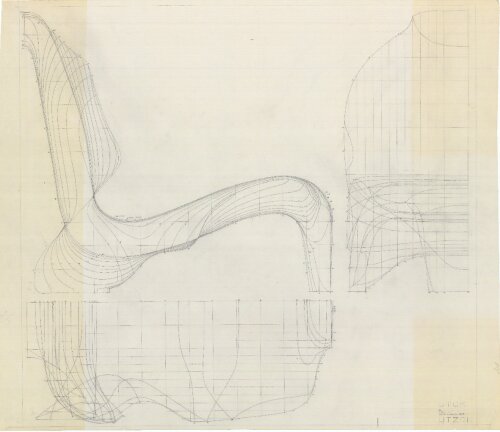
#2 What we can learn from Maison Martin Margiela
By Julian Brües & Wassily Walter
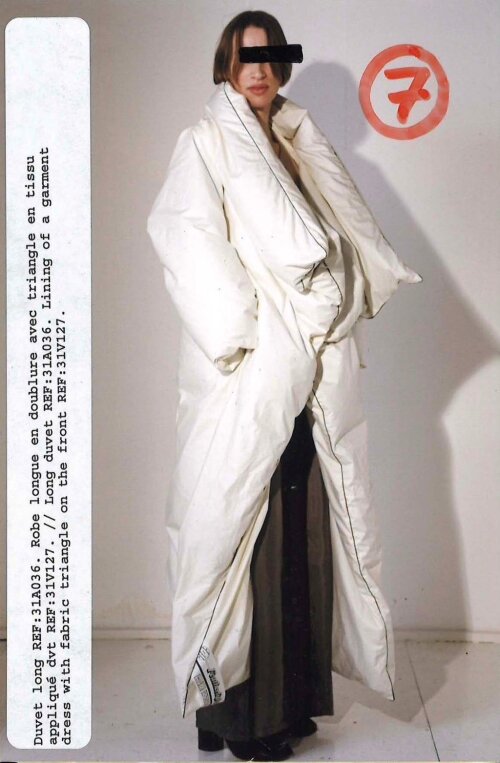
In 1988, 35 years ago, Martin Margiela founded his fashion label after graduating from the Royal Academy of fine arts in Antwerp. Already the first show of the house was set to trigger a paradigm shift in the fashion world and until his exit from the label in 2008 Margiela remained one of the most important and influential figures not only in the creative industry while famously completely avoiding any public appearance.
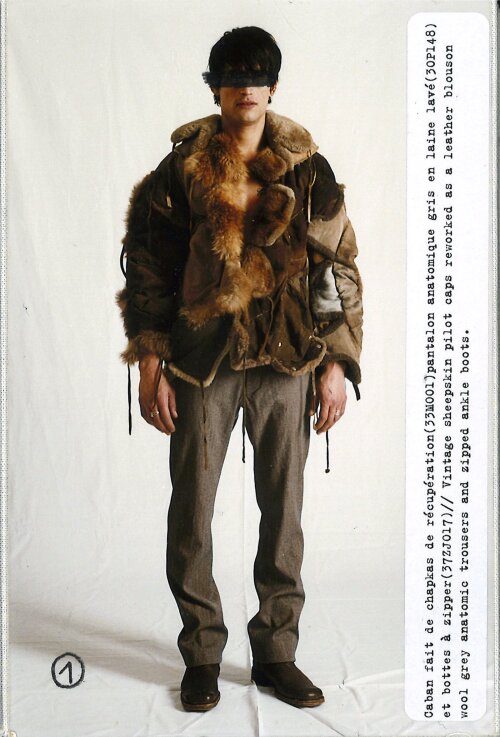
Much reflection and theoretical processing has been done on Margiela's design methods. So far, however, there have been few attempts to transfer them to other creative fields. The one-week workshop with a group of interdisciplinary students from Margielas place of origin, Antwerp will attempt to do so. Using 5 design methods derived from different collections by Margiela, students engage in a transformational performance on their own disciplines.
Divided into groups, the students will use small design task to find out how their assigned method can be applied and transferred to another discipline. As an example: Margiela has bought old furniture and painted it white or covered it with cloth. The form or expression hasremained the same, but the new uniformity has created a context to other furniture from other eras. The labor that went into the custom-made covers revaluates the formerly discarded object, challenging conventional notions of luxury.
Thus, as a first approach to Margiela's work, students could do interventions on existing furniture in their studio in the style of the 5 methods mentioned above. As the week progresses, the assignments could shift to an urban scale and incorporate more complex social and environmental issues into the work. The final products of the workshop week will consist of small assignments. The works will not contain finished designs, but sequences from the different disciplines - which togetherrepresent the interpretation of Margiela's design method. A red thread, so to speak, based on the method, through fragments in several scales.
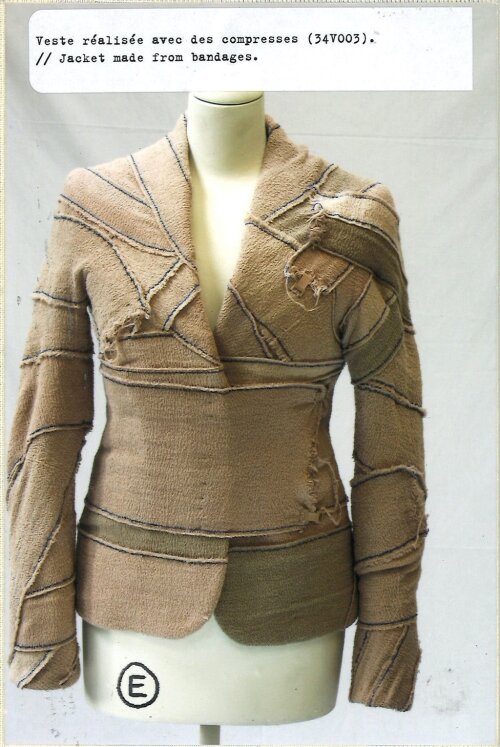
#3 When food storms the squares
By Eulàlia Gomez-Escoda & Emma O'Connell
Food constitutes approximately 15% of the household budget in most European countries, only behind housing and transport costs. But while urban planning and architecture deal with questions related to how we live or how we move, the question of how we eat is not usually included in the concerns of the projects that architects develop in the metropolis.
The way we supply ourselves with groceries — the distances we travel, the means of transport we use, the type of food we buy and the places where we do it — directly impacts in the shape of the city and is different for each type of urban form. In this sense, we can say that the way in which a city feeds its citizens constitutes a unique ‘foodprint’.
Food has been central to urban life and to urban social practices over time. At the beginning of the 19th century, market halls were built in many European cities as precise umbrellas that filtered the light into an interior of majestic dimensions that sheltered the the ephemeral goods sold inside. Markets represented the perfect synthesis between rural and urban world: farmers who sold their crops inside personalized the presence of productive landscapes in the very heart of the city.
In the second half of the 20th century most of these structures went out of fashion in many metropolises, not because they were no longer functional but because they did not fit into the nature of public space and economic activity that planners, architects and politicians had in mind to shape modern city centers. Food supply sites ceased to be the meeting point between producers and consumers and, consequently, the link between what we eat and the territory that feeds us was weakened
In the 21st century, food has once again taken over the squares and farmers’ markets, gastronomic festivals, and bar and restaurant terraces fill public space with smells and flavors. The workshop aims to approach ways of mapping food procurement in Antwerpen — precisely and sensorially — to quantitatively and qualitatively evaluate access to food in the city, analysing the impact on such a daily activity of global issues such as distribution inequalities, cultural sovereignty or the climate crisis.
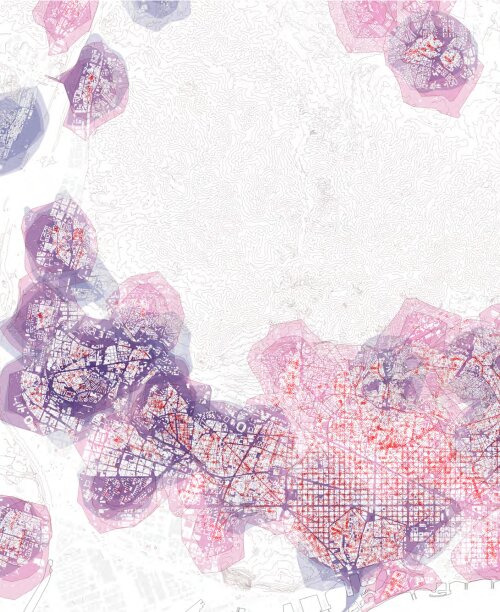
Image 1: Barcelona metropolis. Isochrones (at 5’, 10’, 15’) from each market building and from each temporary market. Author: Eulalia Gomez-Escoda.
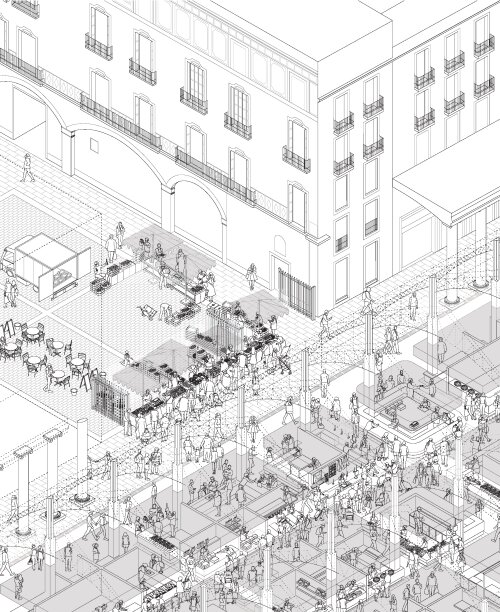
Image 2: Food procurement scenarios in Barcelona. Fruit and vegetable market in Plaza de Sant Galdric and Boqueria market. Authors: Eulalia Gomez-Escoda + Arnau Riu
#4 Pattern and chaos
by Dewi Brunet & Gwenaël Prost
We all experience chaotic paper crumpling on a daily basis. Experiments that often ends up in the recycle bin. But, what if this garbage could become the material for a masterpiece?
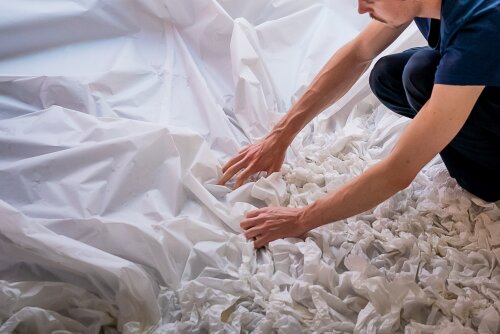
Developed by Nature during millions of years and through countless living beings, crumpling is a universal technic of matter structuration and optimisation. It can be found in the blossom of a flower, in the organisation of our brain, as well as in the pleat of a mountain or even in the formation of a storm. More than a technic, it reflects and questions links between pattern and chaos that surrounds us.
The rise of biomimetic in all spheres of human technology, is showing the urge for a better understanding and respect of the world we are part of. We believe that folding, by a direct and simple approach, is a good introduction to nature inspired technic.
Rather than a pedagogy based on the objective or problem-solving, our workshop is exploratory, as nature, focusing on trials and errors. We will engage students in experimenting and having fun with paper through a unique folding technique : crumpling. Folding is one of the only creative technic that does not remove or add anything from the original material. It requires no tools but, nevertheless, creates complexe and stable structures. We will confront students to face this “white page”, enabling them to discover new horizon by designing with the engagement of their full body and perceptions while co-creating in groups. We will encourage a change of scale, aiming as big as possible, to storm the minds and the places. Large installation, performance, clothes... the outcome could be multiple.
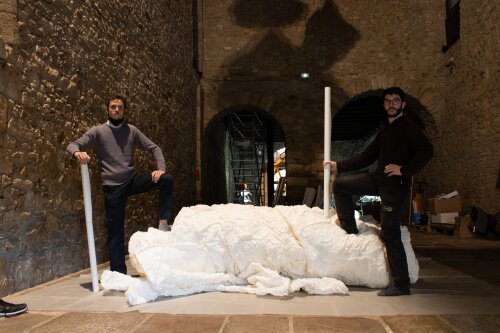
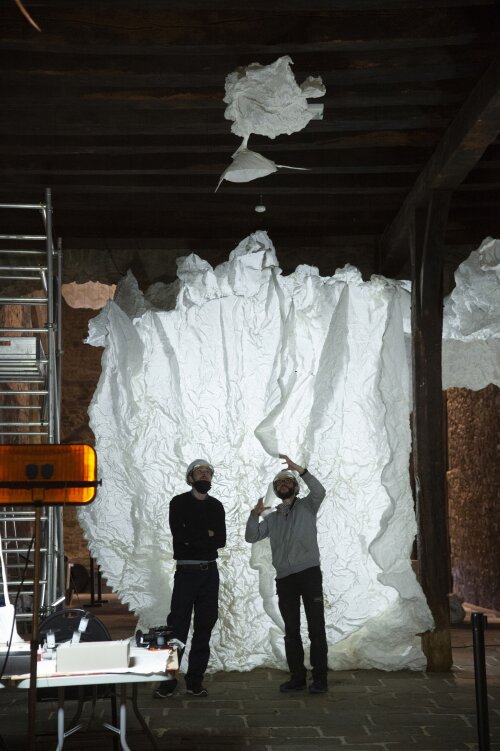
#5 Tales of Symbologies: Subjective Mapping. Centering traditions and philosophies associated with tapestries.
By Hussein Shikha & Sadrie Alves
The carpet acts as a subjective map of one’s locality, a temporary home and a space for gathering. Can centering traditions and philosophies associated with tapestries and its symbols be a way to speculate upon new ways of design and art-making? From a Western viewpoint, the carpet has been neglected and reduced to an object, ignoring her potential to open up other ways of seeing. In this workshop we will not only look at but «see through» the tapestry.
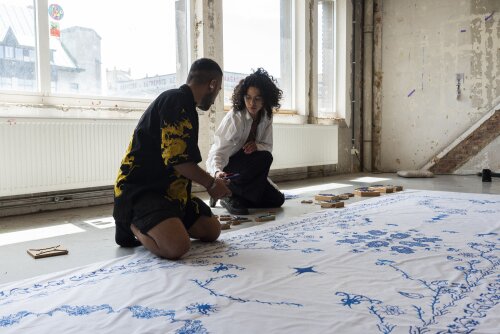
We regard the carpet as an autonomous intersection between art, craft and design while examining the forms of engagement and connection she instigates. During this week we will look into the ancient crafts and symbols of tapestries and woodblocks of different geographies. These art forms are surrounded by immaterial cultural heritages: symbolic ornaments, visual languages that have been undermined by the modernist ‘less is more’ lens and overlooked as an autonomous reference of design and art practice.
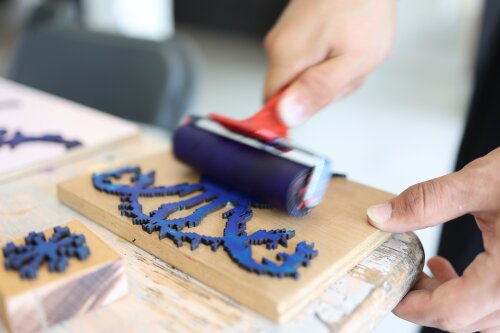
Together we will translate our surroundings into a collective composition, analogous to a tapestry, in dialogue with residents of the area. Through the use of different media, analog and digital, we translate our locality into a tangible vocabulary. The workshop consists of collective readings, screenings, visual exercises, time for reflection in small groups and the larger group, the crafting of a collective work, and a shared meal. This encounter is a space of theoretic insight and hands-on practice. Students of various disciplines can engage in this workshop with their respective knowledges. We look closely into the metaphor of the carpet as a space; its relation to the large socio-economic context; and the implications of handiwork and domestic labor;. The bibliography and references are interdisciplinary and diverse, we encourage critical thinking and cross pollination with angles that challenge, inform and complement each other. The main concern of this workshop is to open the question of how we can relate our practices to broader social concerns; from one thread to a collective fabric.
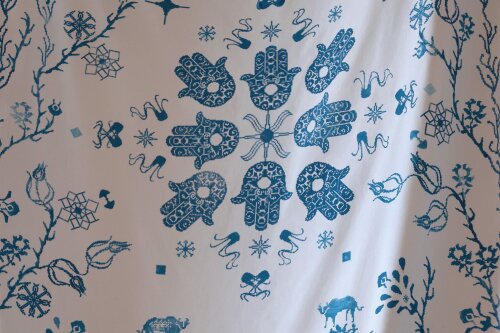
#6 Design Against Taboo (DAT): new insights into the mean-making process of wearable design exploration.
By Beste Ozcan & Muriel De Boeck
Critical reflections, which are inspired by any experience that can help people to see the world with different eyes, have the potential to bring new insights into our life. The main focus of the workshop is to tap into this potentially transformative exchange by exploring how design is responding to it and what we can do today, together. The multidisciplinary and collaborative features of the workshop bring students with different backgrounds together to think and act to tackle some social challenges that are somehow hidden from us. These are sometimes embarrassing, risky, weird or uncomfortable topics, such as body, sex, death, gender, and mental or sexual diversities, to talk about out loud and we can classify them as “social taboos”.
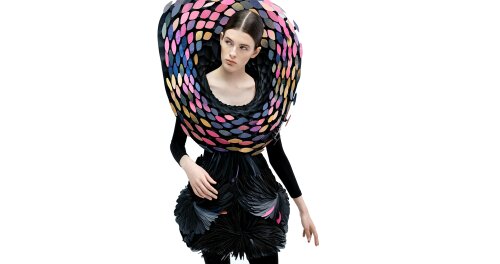
In times of life-changing crises, they become more visible, and this indeed presents a chance for a society to change. For example, handshake during this time of Covid has become taboo, since it brings fear of disease. During this workshop, it is expected to make certain taboos visible to us through a design exploration, which addresses developing body-borne computational or sensory devices. We are heading the way that humans are getting considered more as a whole -with body, mind, and emotion- and taking advantage of all their abilities. During an interaction between a person and a wearable product, the skills of a person
can be considered a trinity of interaction: perceptual-motor skills, emotional skills and cognitive skills. In other words, doing, knowing and feeling. Each assigned should present a clear motivation for exposing a specific taboo, a manifesto declaring their principles, intentions, motives, design or artistic views supporting their wearable design concept and a prototype.
The workshop sections: introduction; assigning teams; defining a taboo topic; preparing their DAT Manifesto; conceptualization; prototyping; short video showing the use of the device in a real-life scenario; debating; deliverables.#designagainsttaboo (make your design visible).
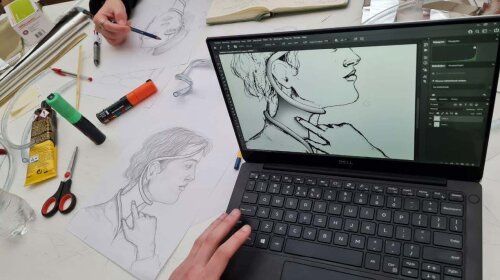
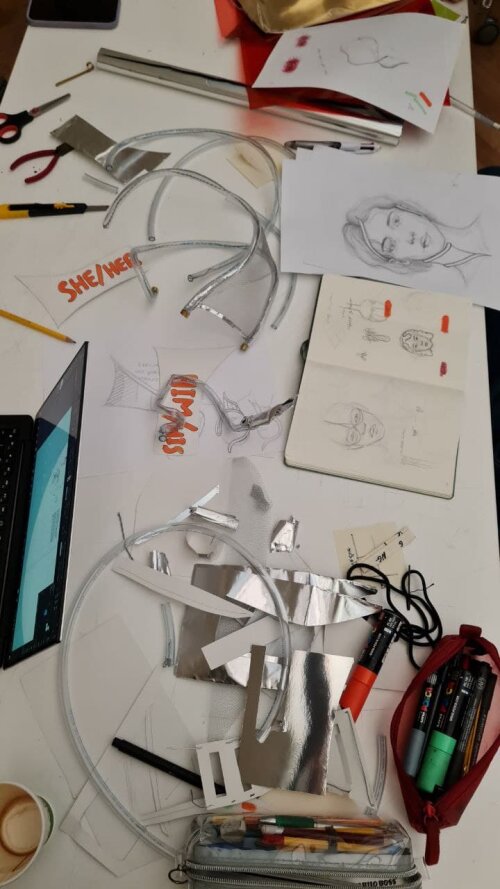
#7 GRIJZE MATERIE
By Davide Cauciello & Octavio Piñeiro Aramburu
In the midst of a STORM of resources induced by rising prices and increasing shortages, what is the stock of unused/undervalued material locally available that we could reuse for building new qualitative and sustainable spaces?
In the same way that a STORM leaves a landscape of debris after its passage, did the price increase generate a stock of leftover construction materials in Antwerp? GRIJZE MATERIE will focus on reuse as a response to the environmental emergencies and an occasion to activate unseen networks and interactions revolving around construction materials.
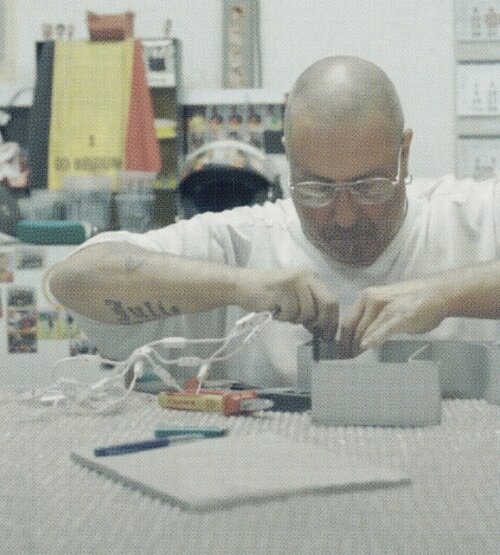
GRIJZE MATERIE will explore the residues produced by the recent incrementation of prices for the specific case of Antwerp, which maintains a strong relationship with its seaport where huge amounts of materials are being imported and/or transformed every day. We will focus on the deposits generated this year due to the altered activity in the construction sector (abandonment of construction sites, unsold stocks ... ) and on its possible reemployment for the production of qualitative public spaces, that might consider socio-environmental issues such as replanting practices, water management and co-construction as a participatory driver to enter in contact with the inhabitants and werkers of Antwerp.
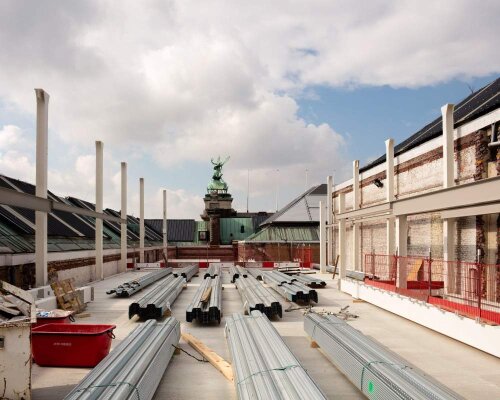
To do so, we imagine different actions that allow to enhance the engagement of each participant - bath tutors and students - within the activities proposed throughout the workshop.
Morning: collective explorations of the city, its outskirts and the port. In particular construction sites, deposits of materials, industrial zones, second hand resellers. The explorations are also moments to get in contact with some important actors (thinkers, makers, werkers, etc.). During these moments some materials will be collected and interviews will be realized if necessary.
Afternoon: division in 2 different werking groups. One for the production of a short movie and one for the assemblage of materials and for the production of an object/artefact.
#8 Brutal and banal with a hint of floral
By Celeste Tellarini
Much of human social thinking operates through highly rigid and clear oppositions: something is good or bad, right or wrong, a success or a failure. This way of thinking trough binary oppositions - old as Western culture - helps us classify, understand and thus control what surrounds us. The disciplines of the built environment clearly align to this scheme and work through recognisable sets of binary pairs which we use in our everyday language.
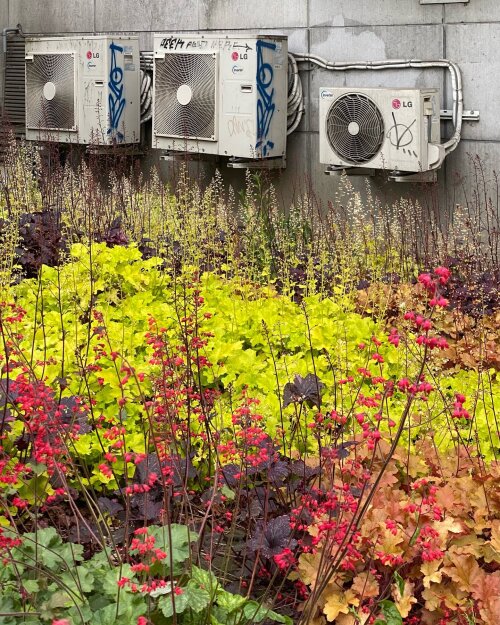
We will challenge this forma mentis, we will explore and interpret what exists between strongly recognisable urban facts, we will allow unclear and unspecified places to become the fundamental starting point of a critical reinterpretation of pockets and slices of Antwerp.
Looking for spatial, formal and material features that do not comply with binary logics, we will apprehend a new language and react to new ways of doing, seeing and inhabiting.
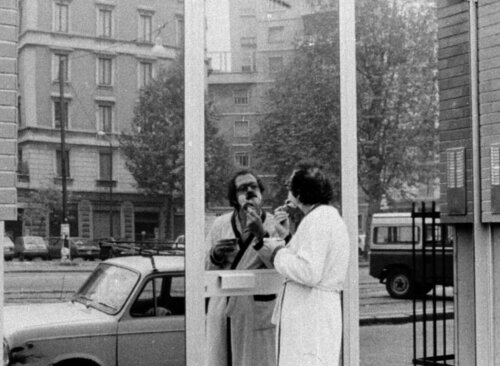
Giving up dichotomies and oppositions, we will discover, analyse, document and understand 'scapes' of Antwerp (unused sealed surfaces, forgotten spaces between properties, outdated infrastructures, unexploited rooftops).
We will structure a set of strategies aiming to reinterpret the selected -scapes, both domesticating and enhancing them. Leaving margin to experimentation through different mediums and ways of communication, the participants will produce a series of artefacts (booklets, photographic series,drawings, Reels, texts, models, performances, installations) through which the enhancing strategies will be conveyed.
The notion of 'scape' clearly derives from ‘landscape’, yet it enacts a first critical move: the term ‘landscape’ comes from the old Dutch and originally referred to a portion of the territory that can be grasped with the gaze. It is now evident how long-established categories do not fit the reality
we live any longer and our disciplines sometimes struggle to address a reality which is eccentric to the reassuring margins of a rigid - that is binary – definition. I propose ‘—scape’ as a mean to redefine the matter of what we grasp outside of accepted
wisdom.
#9 per [by means of] FORM [shape; figure; mode; semblance]
By Susie Brand-de Groot
As designers we often design from a strong vision.
By the conscious use of form in designs and the way we perform our designs to our audience, we can strengthen that vision.
In Antwerp a lot of different cultures live apart together. The city is a lively and colourful melting pot of all kind of people. But… do they feel connected? Do they interact? Is everyone involved?
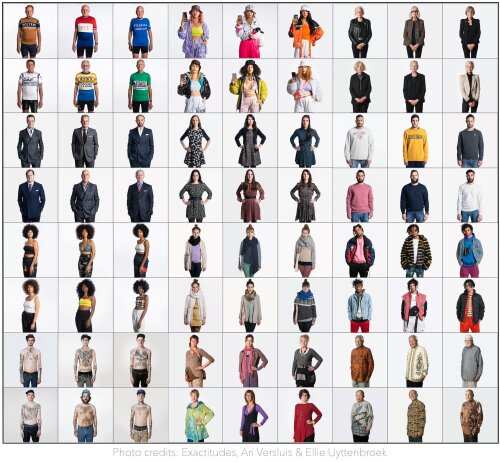
Just like in every city there are social issues and frictions. I’m convinced that we as designers can make the world a bit better, more social, more inclusive and save.
But how can we use FORM to achieve that intention? What is the meaning of form and how can we use form as a design tool to make the world a bit better?
Based on form research and design, students will try to achieve more cohesion in the Antwerp society. I’m convinced that the differences in study background will add value to the assignment, the design process, and the final designs. Students will co-create in small groups.
In the end of the week, they ‘perform’ [present; show] their outcomes together to see if they can make Antwerp as one inclusive city.
__________________________________
#10 Laboratory of the future
by Florian Mahieu & Corentin Dalon
How to think about design and architecture in a world with finite resources? Accustomed to responding to defined orders with finite processes, how can living matter re-examine us on our practices of production of objects and spaces?
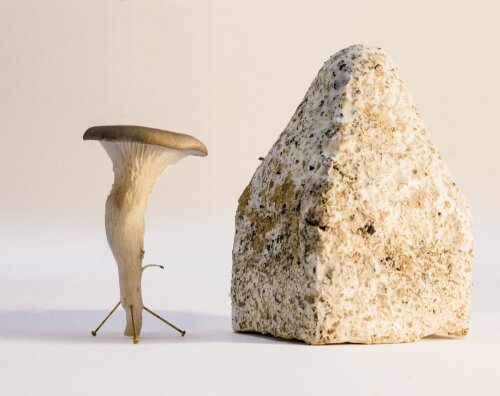
We propose to center our workshop around the mycelium, root network of the mushroom, material in positive, binder which comes to grow to come to «cage» a plant body, along a structure, in a network or within the limits of a mould.
The workshop could be organized around three main themes, at cross-cutting scales and disciplines, from granular matter to territory, from which the students will propose a project:
- PROCESS MATERIAL:
The mycelium is a growing material that can be frozen temporarily. Returned to the appropriate humidity and temperature conditions, the material can grow again. The form can evolve the life cycle of the material being completed by a life cycle of the form, accompanied or random. - REGENERATIVE MATERIAL:
In the world of textiles or construction, research is being carried out so that the growing material can, thanks to the aforementioned characteristics, “heal” torn textiles, cracked columns, etc. - THE GROWING HOUSE:
Beyond the object-subject, we can wonder about the decor itself, which creates the conditions of life and growth of these object-subjects. We could also allow ourselves to dream of living buildings, growing and communicating.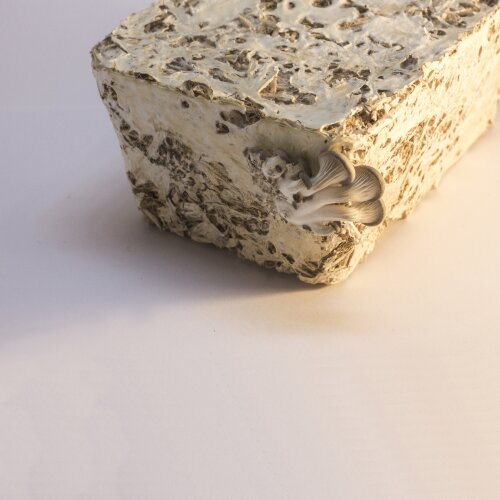
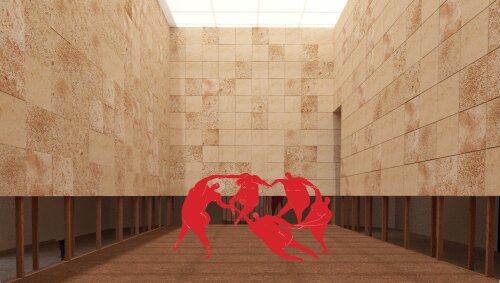
#11 PRIMITIVE HUT
By Leonid Slonimskiy & Artem Kitaev
We see this Open Call as an urgent challenge for the new generation of architects operating in a drastically changing world, and therefore we propose an urgent tool for it. The topic of the work will be temporary minimal architecture of crisis as a tool of dealing with states of emergency: social, political and ecological crises of society today and in future.
REFUGEE / HOUSING CRISIS
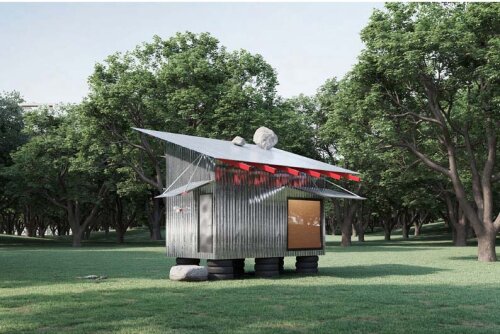
Many people have been left homeless: because of the war, climatic crisis, personal economical reasons. The basic task of this workshop will be to develope a rapidly constructable housing module for people in need of temporary shelter and refugees. The housing unit should be thought of as an extremely affordable small scale building, assembled from building materials collected within a 10 km radius from the construction site. Students should consider using reused and easily accessible materials; the amount of scraps for the construction should be minimized; non-conventional solutions should be developed. The house should be able to grow: a system should be developed to add further modules as required. Estimated cost of materials will be part of the deliverables.
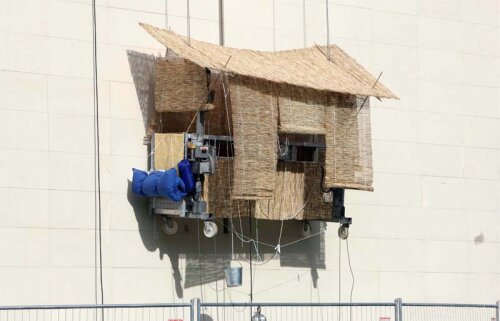
#12 A Soft Storm
By Alexander Auris & Lucas de Mello Reitz
A soft storm is temporary. When passing, moves things up. A soft storm can embrace the city with tender waves. We will use this soft storm to bring gradual politics that look towards a better understanding of memories that were erased.. We propose a week of soft storm, arriving and rethinking thedesign of monuments in Antwerp.
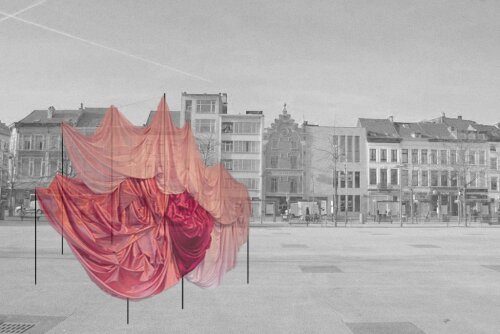
The monuments erected around the city tell some stories, what other stories have been forgotten? If classical monuments are devices to see, remember, and celebrate acts of (so-called) heroism, we propose designing the celebration and remembrance of (dis)affection in the city through queering it. Queering
as a political and ethical tool – an act of change and resistance to ongoing practices of violence.
By revision of the history of queerness in Antwerp, we approach supposedly banal spaces in the city to recuperate its memory, commemorate them and retell a story of a community. We propose replacing the roughness, tallness, highlight, and heroism of existing monuments with the softness, touchiness, fragility, and disruptiveness of the queer monument. In this workshop we will conduct students throughout the reflection on how classic monuments are conceived, patrimony politics held, and how critically think about the design of new, soft monuments based on queer theory in architecture. The transdisciplinary exercise embraces concepts of Theory of Urban Design and Architectural Criticism, and the field of Architectural Cultures.
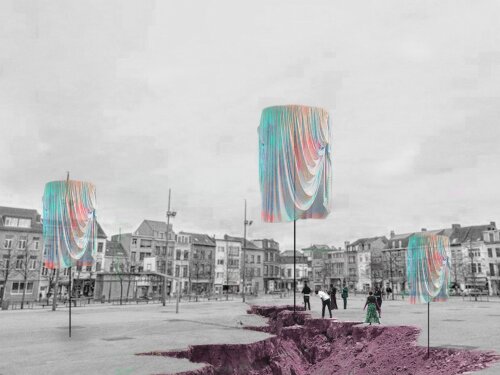
We propose a lecture and an open discussion on urban monuments, using Latin American and Belgium examples, followed by a walk as an exercise in the cityscape, its monuments, and possible stories to be unveiled. In groups or individually, participants construct a conceptual narrative of soft monuments based on their affection – trauma and untold stories and and places of celebration. Later, students are conducted to produce conceptual collages (digital/analogical) to be later exhibited for Soft Monuments.
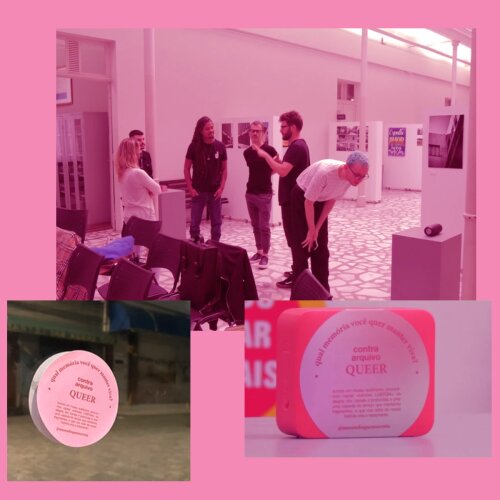
#13 Dreamers Disease
By Iga Gorniak
“When you come out of the storm, you won’t be the same person who walked in. That’s what this storm’s all about.” ~ Haruki Murakami
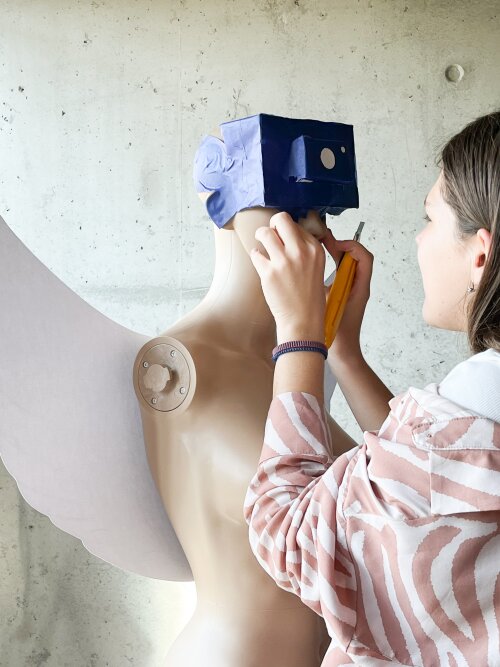
Visiting museums, exploring collections of historical tools and primitive artifacts gives us the opportunity to interact with the past. Studying mysterious objects helps us to understand ancient technologies used by our ancestors and see the progress. In comparison to this, facing modern challenges and rapid changes triggers an inquiry into unpredictable futures.
I would like to invite a group of students for the expedition into the fictional world after the infectious Dreamers Disease outbreak. What caused the epidemic and what alternative medicine has to offer? The presence and research of the Institute of Tropical Medicine located in Antwerp will stimulate holistic thinking, trigger storytelling, and inspire the creation of artifacts. In the co-creative process we will develop a collection of future “instruments” designed to control the situation. We will collectively imagine the aesthetics of “new wave after the storm”, and metaphor will guide us in the process. Created props will be displayed on the final exhibition with short instructions how to do-it-yourself, aiming to stimulate critical reflection and engage social interaction.
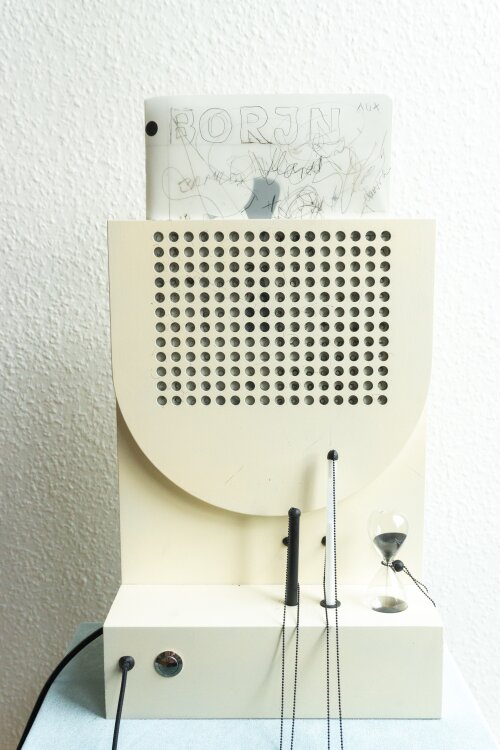
#14 An Imaginative Play
By Saurabh Mhatre & Atula Sahani
“Cities, like dreams, are made of desires and fears, even if the thread of their discourse is secret, their rules are absurd, their perspectives deceitful, and everything conceals something else.” ~ Italo Calvino, Invisible Cities
Imaginative Play: children use their imagination to role-play scenarios they have seen, experienced or would like to experience, bridging the divide between fantasy and reality. Occupying a physical space, holding onto a piece of familiar toy in the hand, a child might look out the window of an imagined space to invent a journey into the unknown. In order to reignite and sustain this sense of myth that is inherent to our physical environment, we in the due course of the studio will explore ways of making the familiar things unfamiliar. Unearthing the object that are embedded within our physical environment, we will reimagine missing pieces of architecture as the links between imaginary and real. As prevailing circumstances and polarization leading to uncertainties take their toll on our social fabric, the studio will pay attention to the ambiguous small and playful things – the elements often most vulnerable to the forces of urban erasure, recomposing them with a sense of wonder and absurdity, making a journey, not unlike Alice, when she stepped through the looking glass.
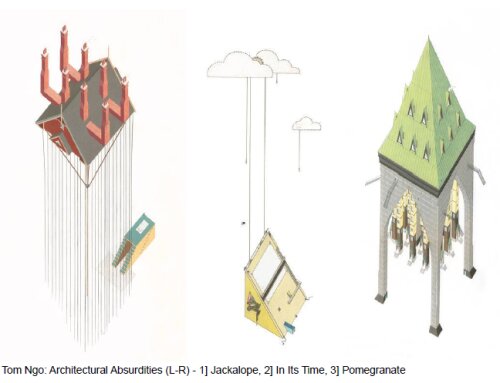
We will explore surgical techniques of partial removal and face lifting, process of incisions, tools for underpinning, bridging and stitching in different scales and sizes, to build playfully ambiguous and technically refined architectural absurdities.
#15 Difference and Repetition
By Livni Holtz
To reuse means to be able to imagine something else.
With my workshop I want to explore in a playful and experimental way the high creative and architectural potential that lies in an affirmative approach to the existing. My workshop is about using what is already there to create something new
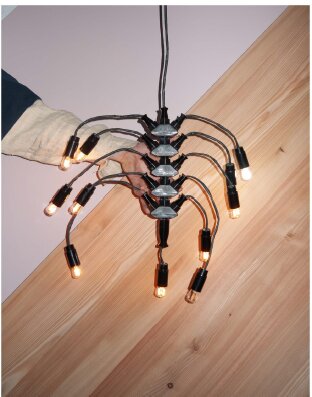
In his book "Operating Instructions for Spaceship Earth", Buckminster Fuller compares the Earth's ecosystem to an egg and humans to the chick that eats a limited amount of supplies for its growth. "Having left its first asylum, the chick must now set its own legs and wings in motion to discover the next phase of its regenerative preservation," he cautioned. But apart from attempts to reduce the amount of energy used in the production process or to substitute individual materials, many designers have so far made no serious effort to reduce the ecological footprint of their industry or to bring about any major change in the consumption habits of society. In every change that has taken place, certification schemes and standards introduced by governments have played a bigger role than designers.
The workshop is fundamentally about creating something new through the repetition and alteration of a single element and questioning modern, functional and Fordist-produced objects and the associated mindset of eternal progress in today's global context as a reaction to cultural standardisation, massification and commercialisation. Finally, in an age of increasingly complicated flows of goods and capital on spaceship earth, any ecological vision must be accompanied by a more global understanding of design and its place in human civilisation. Accordingly, time is not seen here as a linear progression, but as a multiplicity that makes it possible to navigate through history and all the time zones of the planet and to create new connections or assemblages between "signs" that are far apart.
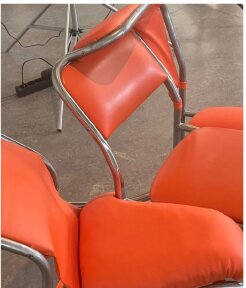
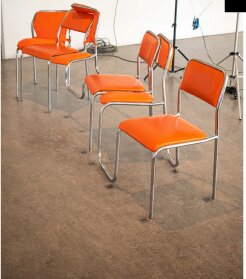
#16 Antwerp Soundscapes
By Michel Kessler & Alessia Bertini
Antwerp Soundscapes explores the soundscapes of Antwerp. In this workshop, heterogeneous sounds of different origins will be collected through field recordings and transformed into a playable installation with the aim of intensifying our perception of the city.
With the workshop we want to change together the psychogeographical perception in the city of Antwerp by challenging individuals to tune into acoustic spaces that dissolve the visual boundaries between external and internal worlds. Sound will be understood as a primary element of the spatial structure and aesthetic quality of a landscape, no less important for our understanding of ecosystem function than spatial or landscape order.
Moreover, it will also be a matter of demonstrating the political potential of soundscapes in urban space and of investigating the creation of new forms of public spheres by means of the immaterial power of sound in a world dominated by the visual.
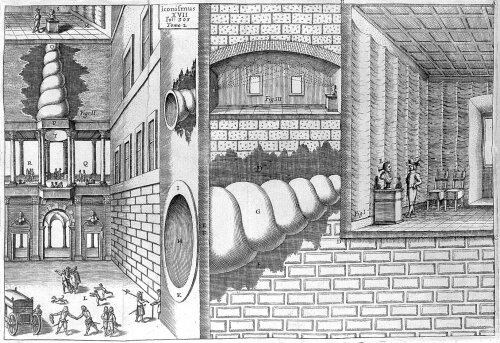
#17 Storytelling for earthly survival
By María Mazzanti & Anna Bierler
"In these troubling times, the urgency to trouble time, to shake it to its core, and to produce collective imaginaries that undo pervasive conceptions of temporality that take progress as inevitable and the past as something that has passed and is no longer with us is something so tangible, so visceral, that it can be felt in our individual and collective bodies." ~ Karen Barad
With an imminent “apocalypse” coming and survival tactics and lifestyles permeating our cultural and political scenarios, thinking about the end has become, as Mark Bould argues, the central subject of our collective unconscious. From the end of a stable climatic condition, massive extinctions to the downfall of global capitalist economies, the end of life as we know it is deemed terrifying. Still, it serves to think critically about the underlying power structures that hold together problematic practices of architecture and design.
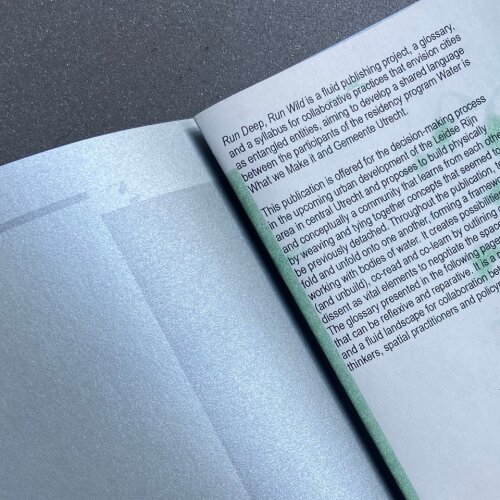
Storytelling for earthly survival is a workshop to critically explore ideas of survival, climate catastrophe and anthropocentrism. In the course of 5 days, participants will delve into speculative writing and feminist methodologies as worldbuilding practices to produce a series of texts that delve into ecological violence, non-linear narratives and climatic urgencies. Throughout the week, a series of collaborative reading sessions, writing exercises and explorations of publishing as a site-specific and community-forming practice will occur.
The collaborative aspect of the workshop aims to create a temporary community. Instead of focusing on a solution-oriented pedagogy, this approach allows to expose the participants' backgrounds, ideologies and socio-political contexts, enabling the production of relational and knowledge creation.
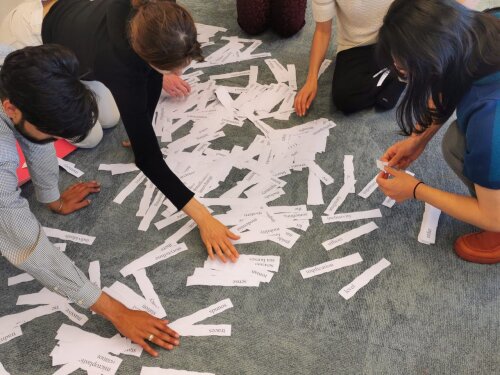
#18 MAKEup
By Andy Milligan
Taking inspiration from the creative freedom offered through asemic writing, (a hybrid artform that weaves words and images together), this sculptural workshop aligns conceptually with existing research precedents such as experience prototyping (Buchenau & Fulton Sur, 2000) and improvisational making in theatre. My current research uses sculpture to reframe the interior as an expanded practice that plays with artefacts of the interior and exterior landscape.
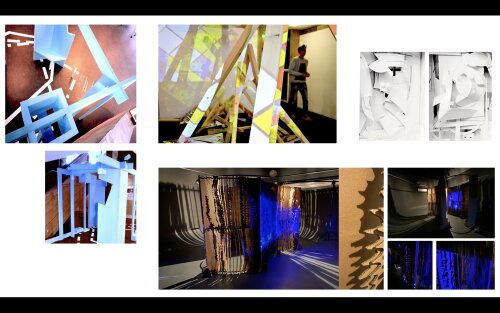
I propose to engage Masters students with speculative sculptural approaches that employ simple studio materials, e.g., paper, card, tape, string, pens/pencils, 3D sketching and playful object-making with thoughtful, poetic processes such as asemic making. This offers an inventive attention to the workshop themes towards expanding our understanding of critical design through emotive and expressive experimentation.
These are valuable alternatives to the established representational conventions in design education and practice, that mostly occur near the end, not at the start of a project. By making from the start, by feeling our way through materials and responses as repeated acts of enquiry, we can problem ‘find’, and problem ‘solve’ in an active, rigorous exploration that unlocks creative possibilities to provide students with flexible and sustainable low-fi tools to develop new methods of identifying and framing future issues.
#19 If I knew then, what I know now
By Ko Nakatsu
Critical and speculative design is usually about the future. I’d like us to look at the past. And redesign the past to learn about the present. If the combustion engine was not popularized, what would the world look like?
If we never discovered the Covid vaccine, how would our world look differently? If technology in Egypt had advanced to our current knowledge, will the Pyramids look like the Pyramids?
etc.
The workshop week will offer individual assignments as well as a group assignment. We will start with a personal project and look to redesign things from our own past. We will then work in groups to identify, research, and redesign artifacts/environments/monuments/rituals of the past with a modern perspective. How would we design things differently?
The last project will look at the past from a future perspective. What will the future say about us? What will they think was ridiculous? How would the future humans, redesign the current now?
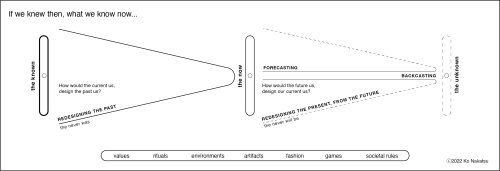
#20 Design for Ephemerality
By Lara Weller & Jan-Micha Gamer
We live in a world of permanent change. Nothing in this world remains the same — even though an inner human need strives to create permanence and immortality. This vehement striving and the resulting careless actions now present humanity with huge challenges to overcome: products are produced regardless of their end of life and generate huge mountains of „waste“; architectures are built in a conflict of material and environment, so that they have to be demolis-hed after a few decades; resources are exploited on such a scale, that the devastating environ-mental consequences are already noticeable; and much more.
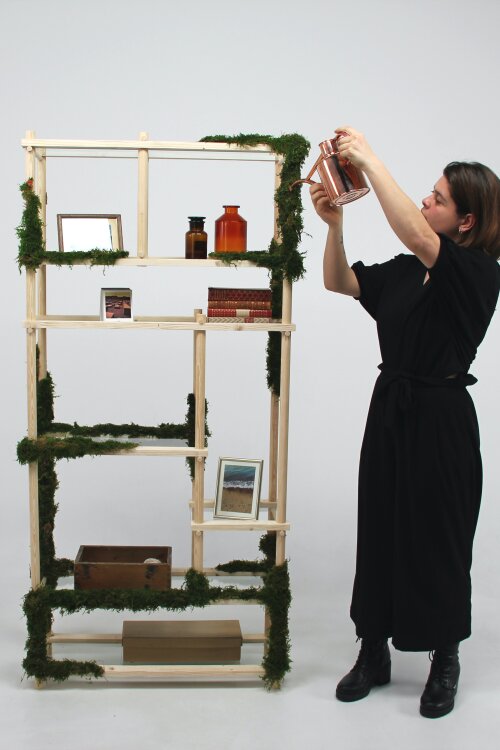
We are convinced that human intervention and creation is much more mindful, cautious and resource-saving if we are aware of our own mortality, the laws of the natural cycle as well as the complexity of the planetary system. In this workshop, we would like to focus on this aspect of ephemerality together: How does our relationship to our environment change when we become aware of our mortality? How would we shape our environment if we assume that all material things must also be returned to their original state at the end of our lives? How do we draw crea-tive power and ingenuity from our ephemerality in order to shape this world differently?
With these and other questions, we want to find a way within different contexts to get out of the thinking of infinity, limitless power and immortality that we demon-strate to each other on every day basis. We therefore start on a very personal level. In the following, the students are to develop Critical Design concepts in an interdi-sciplinary way, according to their strengths and backgrounds.
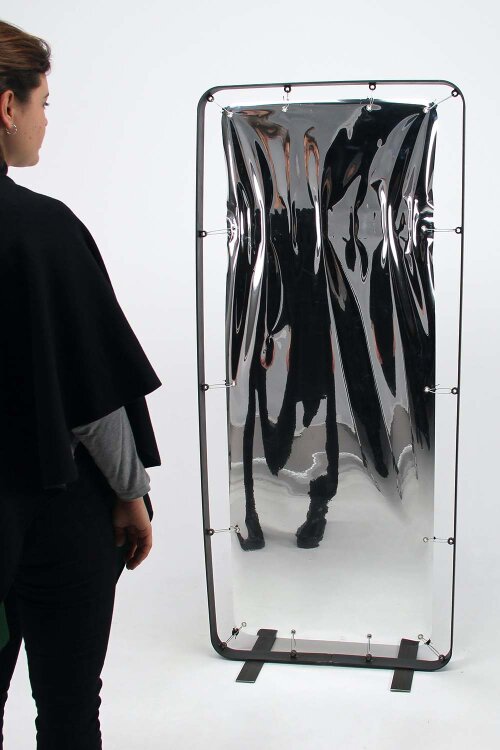
These concepts will make a new statement in this world beyond utopian future scenarios. The knowledge the students have gai-ned in their disciplines will be used to develop each design concept in various group settings with critical questioning and learning how to deal with unresolvable conflicts.